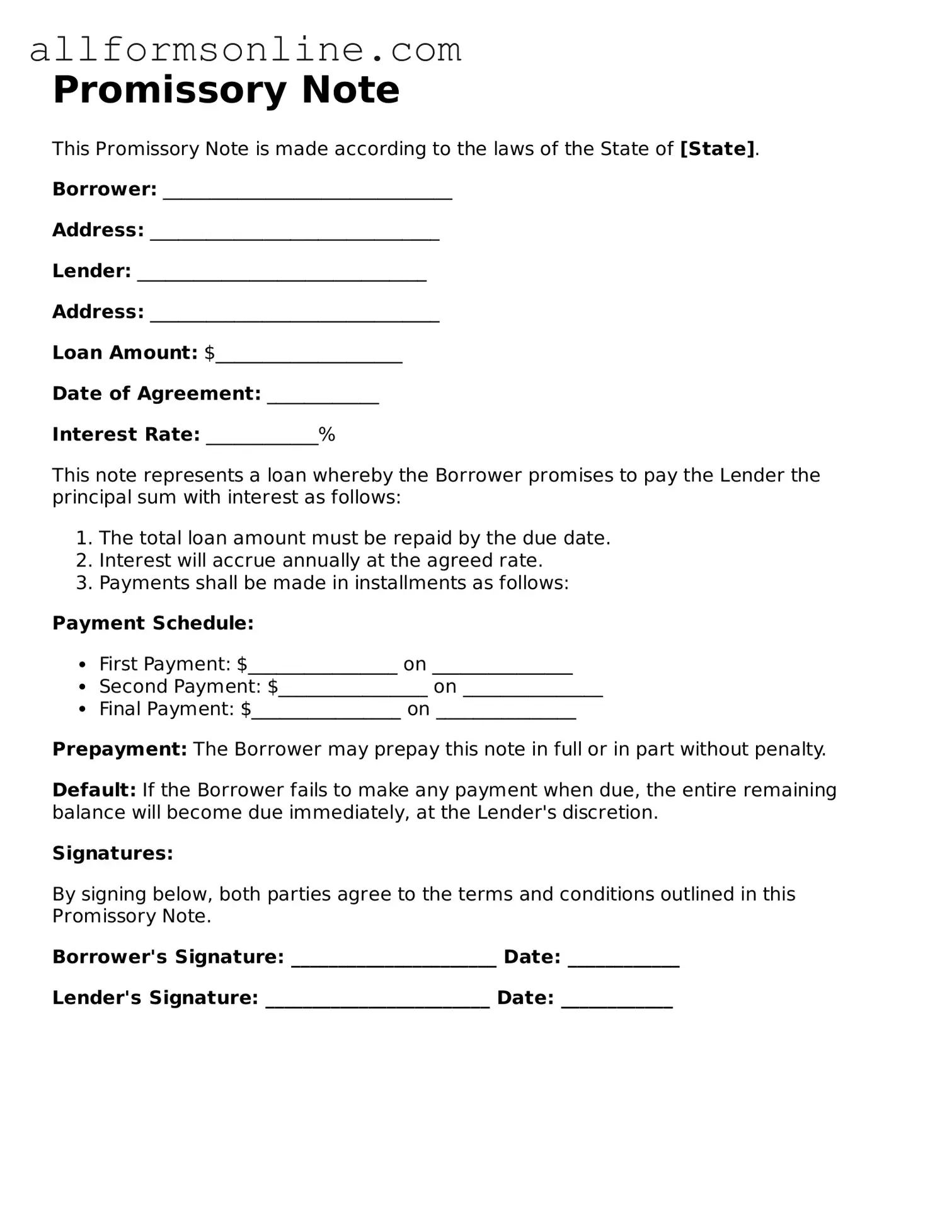What is a Promissory Note?
A Promissory Note is a written promise to pay a specific amount of money to a designated person or entity at a specified time or on demand. It serves as a legal document that outlines the terms of the loan, including the interest rate, repayment schedule, and any penalties for late payment. This document is essential for both the lender and the borrower as it provides clarity and protects their rights.
Who can use a Promissory Note?
Any individual or business can use a Promissory Note. It is commonly used in personal loans, business loans, and real estate transactions. Both lenders and borrowers should understand the terms before signing. It is important for both parties to ensure that the note reflects their agreement accurately.
What information should be included in a Promissory Note?
A Promissory Note should include the following key information: the names and addresses of the borrower and lender, the principal amount being borrowed, the interest rate, the repayment schedule, and any late fees or penalties. Additionally, it should state the date of the agreement and any terms regarding default. Including this information helps prevent misunderstandings in the future.
Is a Promissory Note legally binding?
Yes, a Promissory Note is a legally binding document, provided it meets certain criteria. It must include the essential elements such as the parties involved, the amount, and the terms of repayment. Once signed by both parties, it can be enforced in a court of law if necessary. This binding nature emphasizes the importance of understanding the terms before signing.
Can a Promissory Note be modified after it is signed?
Yes, a Promissory Note can be modified after it is signed, but both parties must agree to the changes. It is best to document any modifications in writing and have both parties sign the updated agreement. This ensures that everyone is on the same page and helps avoid future disputes regarding the terms of the loan.
